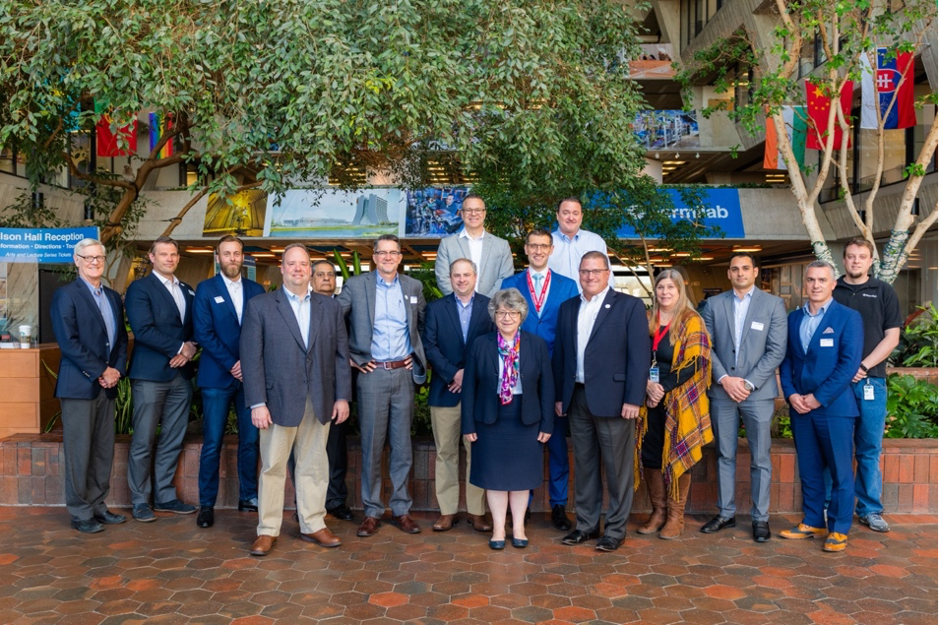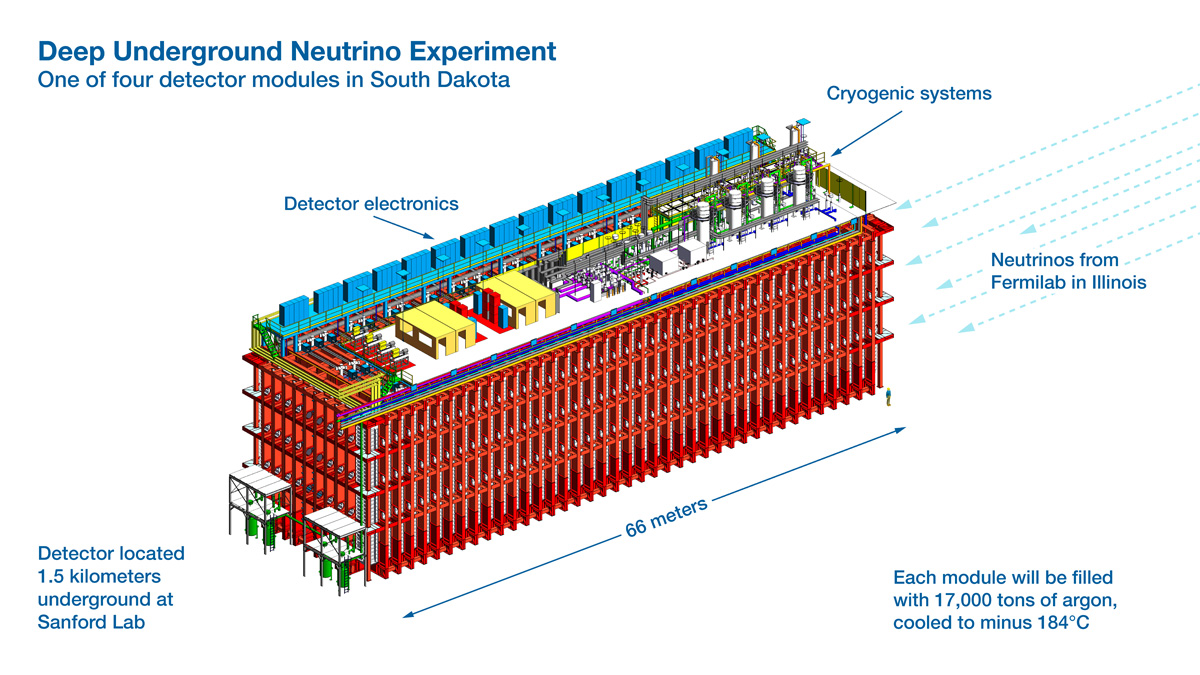Contract Awarded for Acquisition of Large Cryogenic System for DUNE Detectors in South Dakota
 A significant milestone has been achieved in the realization of the Deep Underground Neutrino Experiment (DUNE) with the awarding of a multi-year contract for the acquisition of a large cryogenic plant. This plant will be responsible for cooling tens of thousands of tons of liquid argon, bringing the ambitious experiment one step closer to fruition.
A significant milestone has been achieved in the realization of the Deep Underground Neutrino Experiment (DUNE) with the awarding of a multi-year contract for the acquisition of a large cryogenic plant. This plant will be responsible for cooling tens of thousands of tons of liquid argon, bringing the ambitious experiment one step closer to fruition.
DUNE, along with its cryogenic plant, will be housed in the Long-Baseline Neutrino Facility (LBNF), a pioneering project hosted by the U.S. Department of Energy's Fermi National Accelerator Laboratory. The experiment's primary objective is to unravel the mysterious behavior of neutrinos, the elementary particles, in greater detail than ever before. The journey begins with a neutrino beam, powered by Fermilab's PIP-II accelerator, traveling approximately 1,300 kilometers (around 800 miles) through the Earth to reach the massive, liquid-argon-filled neutrino detectors in the LBNF caverns at the Sanford Underground Research Facility in South Dakota.

Air Products, an industrial gases company based in Allentown, Pennsylvania, has been entrusted with the critical task of providing the equipment to cool the 17,500 metric tons of liquid argon in each of the large cryostats of the far detector modules. The contract's comprehensive scope includes engineering, manufacturing, installation, and commissioning of a liquid nitrogen refrigeration system. This system will maintain the argon at an impressive minus 186 degrees Celsius (or minus 303 degrees Fahrenheit), with both the nitrogen and argon systems designed as closed systems, ensuring no active venting into the environment.
Argon, a noble gas approximately ten times heavier than helium, becomes a liquid at low temperatures. The liquid nitrogen refrigeration system will cool the argon within the DUNE detectors, with the argon flowing through a separate, closed loop. As the argon undergoes slow boiling, a natural thermodynamic process, the resulting gaseous argon will be directed through heat exchangers cooled by liquid nitrogen. As the liquid nitrogen's temperature is colder than the temperature at which argon liquifies, the gaseous argon will condense back into liquid form. Subsequently, this recovered liquid will undergo a purification process before being reintegrated into the liquid argon used in the DUNE detectors and cryostats.
The process for keeping the liquid nitrogen cold is more intricate. During operation, the liquid nitrogen in the refrigeration system warms and transforms into nitrogen gas. Instead of cooling the nitrogen with an even colder material, the nitrogen gas will be recondensed using a series of pressure changes, capitalizing on proprietary turboexpander technology and the Joule-Thomson effect. This well-established method involves compressing the gas significantly and then forcing it through a small opening, such as a valve, allowing it to expand and cool down. Repeating this compression and expansion process multiple times eventually leads to the gas becoming cold enough to liquify. Notably, this approach is not feasible for the argon due to its strict purity requirements, as the detectors' argon must reach purities of parts per trillion.
Air Products will undertake the engineering, manufacturing, and installation of the entire liquid nitrogen cryogenic system. The incorporation of modular compression technology for compressing the nitrogen gas and turboexpanders for expanding and cooling the nitrogen is integral to this system. Additionally, the system will possess the capability to generate its own nitrogen, utilizing Air Products' proprietary membrane technology. This membrane system employs hollow-fiber technology to extract high-purity nitrogen from compressed air.
 Upon completion of the engineering phase, the system will be manufactured at one of Air Products' facilities. It will then be disassembled to fit through the 5-foot-by-13-foot shaft opening and transported in pieces, a mile underground, into the newly excavated LBNF caverns that will house DUNE.
Upon completion of the engineering phase, the system will be manufactured at one of Air Products' facilities. It will then be disassembled to fit through the 5-foot-by-13-foot shaft opening and transported in pieces, a mile underground, into the newly excavated LBNF caverns that will house DUNE.
From an engineering perspective, the liquid nitrogen system is truly unique—it is one of a kind," said David Montanari, the deputy project manager for the Far Detector and Cryogenics Infrastructure Subproject. "It's also unique from an industry perspective since such systems are not typically built underground."
The engineering effort to finalize the system is expected to take approximately 10 months. Following design approval, the system will be manufactured and installed, with an estimated timeline for going online in 2026. Once operational, the DUNE far detectors are anticipated to become the largest underground cryogenic system globally.
Find more information about the cryogenics of the LBNF/DUNE far detectors here. Fermi National Accelerator Laboratory is supported by the Office of Science of the U.S. Department of Energy. The Office of Science is the single largest supporter of basic research in the physical sciences in the United States and is working to address some of the most pressing challenges of our time. For more information, please visit science.energy.gov.
Images:
1. Participants from the project’s kick-off meeting, with representatives from Air Products and the LBNF team, gather in Fermilab’s Wilson Hall with Fermilab Director Lia Merminga (center, front). Credit: Ryan Postel, Fermilab
2. One of the DUNE detector modules that will be assembled a mile underground and filled with 17,500 metric tons of liquid argon. Credit: Fermilab
3. Conceptual design of the cryogenic cooling system for the large DUNE detector modules. Credit: Air Products



